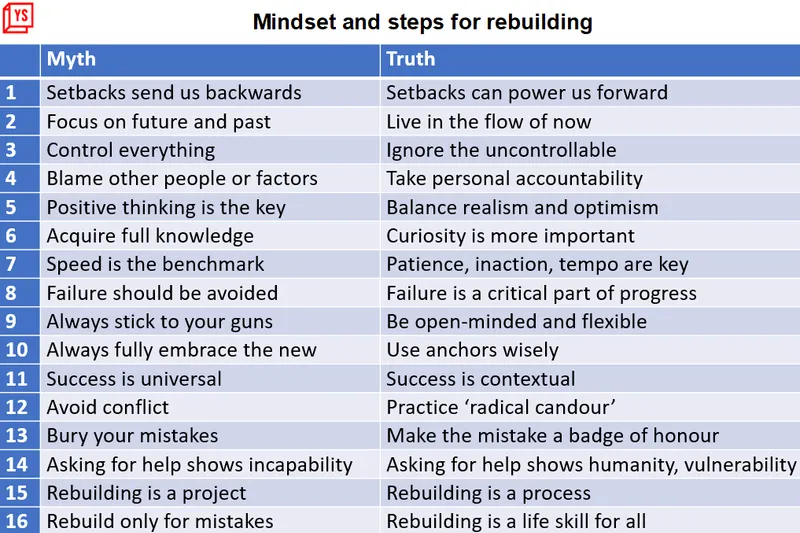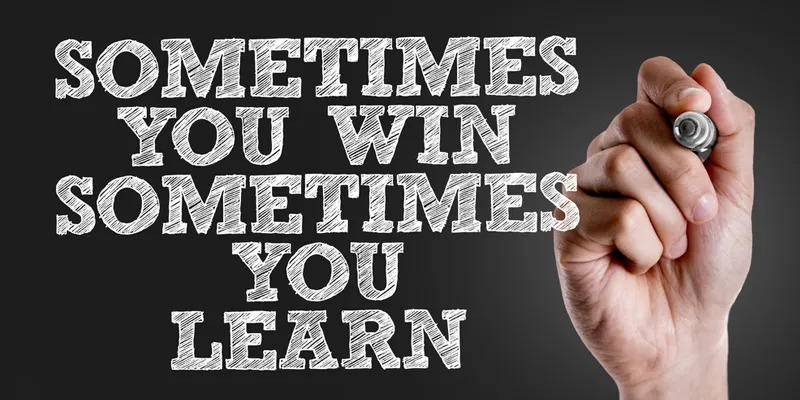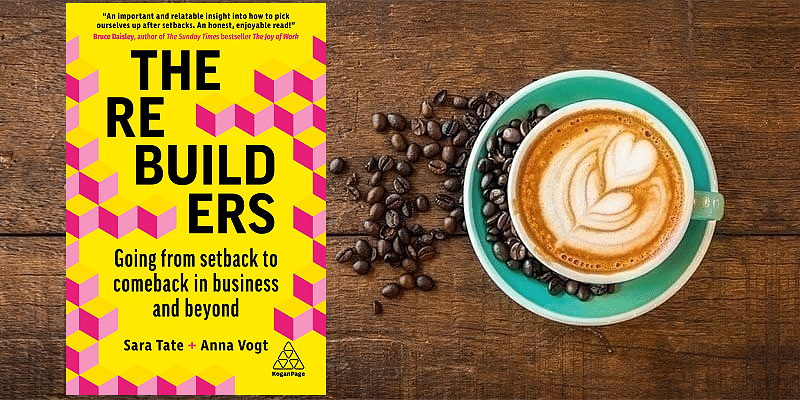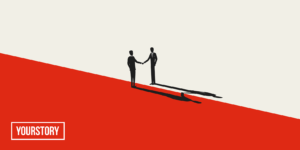Launched in 2012, YourStory’s Book Review section features over 350 titles on creativity, innovation, entrepreneurship, and digital transformation. See also our related columns The Turning Point, Techie Tuesdays, and Storybites.
While much attention understandably focuses on business success stories, there is much to learn as well from failures, mistakes, and misfortune. An inspiring treatment of such resilience is offered in the must-have guidebook, The Rebuilders: Going from Setback to Comeback in Business and Beyond by Sara Tate and Anna Vogt.
News of mistakes rarely makes it to the press, but fortunately, there are conferences like FailCon that help entrepreneurs analyse failure. See also my articles on Eight lessons in failure from Amani Institute’s Fail Faire and Exit Plan B: Where is your parachute? 15 tips for winding down your startup.
Sara Tate is the former CEO of TBWA London, and Anna Vogt is Chief Strategy Officer at VMLY&R London. They are also co-hosts of the Rebuilders podcast.
Each chapter is divided into four sections: myth, truth, tool, and story. The authors draw insights from Google, NHS, World Economic Forum, and experts from the fields of advertising, sports, and even human rights. The material is written in an engaging format, and backed by 18 pages of references and sources.
“Setbacks are one of life’s most democratic experiences,” the authors begin. “When life gives you lemons, rebuild,” they add.
There is much creative potential found in the rubble of disappointment, provided the right mindset, skills and tools are applied.
Here are my key takeaways from the 18 chapters of this valuable 280-page book, summarized as well in the table below. See also my reviews of the related books Fail-Safe Startup, The Other ‘F’ Word, The Messy Middle, Who Blunders and How, Adapt, The Up Side of Down, The Wisdom of Failure, Fail Better, Fail Fast, True North, and Failing to Succeed.

I. Reframing setbacks
Equilibrium in a fast-changing world can be elusive and even dangerous. It is important to accept that the journey of life will be full of setbacks, even though this can be discomforting and frightening.
Instead, setbacks should be seen as catalysts with embedded seeds of a better future, the authors advise. Setbacks can be good and bad at the same time.
Resilience is a muscle that needs regular strengthening, and we must go into stretch zones. It is important to be willing to course-correct, and even hold onto things only lightly.
While retrospection and vigilance are important in life, it is also key to living in the now. Rebuilders do not have regrets, and focus on what to do or avoid now. The authors describe five principles of mindfulness in this regard: non-judgment, patience, beginner’s mindset, trust, non-strife, acceptance, and letting go.

In the face of uncontrollable situations, it helps to change perspective and focus beyond outcomes. Anxiety and worry should be confronted but only for a short time. Positive mental imagery and future visions can be therapeutic in times of grief.
For example, cancer patient Kris Hallenga transformed herself into an educator about surviving cancer. Howard Napper moved away from a fashion lifestyle of parties and alcohol to offer training in body-based mindfulness. Such routines and rituals are followed by athletes as well.
Hope Patterson could never fulfil his dream of becoming a basketball champion due to health and financial setbacks. But he accepted his fate and transferred his passion into becoming a DJ and launching a platform for DJs, festivals and brands.
It is not always important to know where one is heading or be able to control it, advises breast cancer survivor Sarah Libbey, founder of a marketing firm. Her challenges actually helped become resilient during the pandemic.
“COVID-19 has been a huge learning in terms of all the things that we can grieve and how we deal with that grief,” recalls healthcare professional Anna Lyons.

II. Making comebacks
The authors cite research which shows that blind optimism or positivity can be simplistic, counter-productive, and even a hindrance. At the same time, one should not swing to the other extreme and expect the worst.
“Learn to balance realism and optimism,” the authors advise. It is key to be positive but still grounded. Leaders should prepare for a range of eventualities, right down to how to communicate good or bad news.
“It turns out that the glass is both half-full and half-empty. But more importantly, it is refillable,” the authors affirm.
Flexibility and pivots are important for agility, but confirmation bias and loss aversion can come in the way. Changing one’s mind may be seen by some as inconsistency and indecision, but should be viewed as reinterpretation in the face of new facts, the authors advise.
They cite high-jumper Dick Fosbury as a contrarian thinker who pioneered jumping backwards instead of forwards. In the business world, flexibility can be in strategy or tactics but not core values, according to Kawal Shoor and Navin Taljera, co-founders of Indian ad agency The Womb.
Not all success can be measured in quantitative terms, and there are multiple external and internal definitions of success and happiness. Reinterpreting success based on values and vision can help frame and recover from perceived setbacks.
Fish should not be judged on their ability to climb a tree, the authors joke. Mark Lewis first experienced success when he sold his startup, but then found his calling in nurturing talent as Dean of the School of Communication Arts.

Radical candour and psychological safety are preferable to conflict avoidance. One should embrace hard conversations and tough truths, but with respect rather than rudeness. Unfortunately, not all companies have such constructive disagreements, the authors observe, pointing to Theranos as an example.
Shared airtime, space for introverts, and lack of side-conversations are good indicators of healthy organisational communication, according to Sophie Devonshire, CEO, The Marketing Society.
Channels for anonymous feedback, humorous use of language, roping in trained facilitators, and a regular weekly rhythm for employee inputs and leadership sharing also help. Trainer John Curran advocates the use of birds-eye and worm’s-eye views for surveys.
Asking for help should not be seen as a sign of weakness or ignorance, a burden on others, or an expectation of reciprocity. Instead, it is a reflection of vulnerability, humanity, interconnectedness, and leadership.
Knowledge gaps should be converted into learning curves, the authors advise. Downward spirals can even be converted into community movements.
For example, Lucy Rocca tackled her own problems with alcohol by launching Soberistas as a community platform for women to share similar issues and support one another.

III. Dealing with uncertainty
In a VUCA world, it may not be possible or desirable to get all possible scenario knowledge in advance. It is better instead to let go of a map and be powered with curiosity and confidence to tackle the messy middle.
The magic of new ideas and plans happens in this “fertile void,” even though it may seem uncomfortable “between trapezes.”
The authors cite David Bowie as a good example of an artist who kept unlearning and reinventing himself. A wonderful accident led Alexander Fleming to discover penicillin when he was actually looking for an influenza cure.
Hotel chain founder Chip Conley recast himself as part mentor and part intern at Airbnb. He leveraged a beginner’s mindset of curiosity along with his earlier experience to offer fresh insights into guest experience.

The pandemic is allowing new ideas and perspectives to emerge, with the license to change and pivot, according to Jason Gonsalves, Chief Brand Officer of The Face magazine.
However, in times of uncertainty and fast change, one should not mindlessly race after every new trend. The authors advise focusing on anchors that keep us grounded in the form of values, communities, and routines. Virtual coffees during the pandemic WFH (work from home) shift are an example of anchoring in the face of disruption.
The UK NHS drew on previous virus outbreak experiences to extract useful principles, practices and even language. Stabilisation was achieved through an approach of reflect-repair-renew-recalibrate.
During pandemic store closures, Debenhams partnered with an online retailer, drew up a new finance deal, started a call centre, and delivered laptops to employees. Empathy and respect were anchoring principles.

IV. Pace and tempo
There has been too much emphasis on speed, but this can actually hamper productivity and health. Instead, it helps to pause, slow down and even reverse direction at times, the authors counter. Tempo, pace and energy need to be managed, not just time.
Conserving and renewing physical, emotional, mental, and spiritual energy help resilience and happiness. Pauses, snack breaks, walks, and change in direction help here. Taking breaks should not be seen as lack of passion or ambition.
The authors again cite athletes as good exemplars here. Growth comes from exercise as well as rest and recovery.
The authors caution against purely Newtonian ways of thinking in the business world, based on linear models and hard KPIs. Instead, a quantum theory metaphor is better, with multiple possibilities and states.
Spending more time on research and decision-making can improve execution. “Patience and impatience are both valid drivers. Just make sure they serve your ultimate goal,” the authors advise.
Tom Hodgkinson founded the magazine The Idler to advocate the healthy impacts of periodic idling, which improves efficiency and purpose. Nick Propper founded Impact Human Performance to help people manage their energy better via recovery and not just performance.

V. Failure and resilience
Failure is a prerequisite to success, and can be harnessed to move forward. Failure deflates energy and can be a bitter pill to swallow, but there are ways to prevail and persevere. Failure can be a source of wisdom, power and even inspiration for others.
“We are surrounded by failure,” the authors observe, pointing to startups shutting down, grocery product launch failures, and even divorce rates as examples.
Fear of repeating failure and loss aversion are some challenges here; having a growth mindset can help overcome them. Challenges should be relished as a chance to learn and grow.
Sports psychologist Jamil Qureshi even describes FEAR as False Evidence Appearing Real. One should not see patterns of failure when there are none. Athletes and musicians offer useful lessons in the importance of “deliberate practice” rather than mindless repetition.

“The price of success is always pain in full and upfront,” Jamil adds. It is important to accept that failures can happen, process them, and move on from them, the authors advise.
Author Sara Tate is dyslexic, but devoted herself to continuous practice and improvement. She was also encouraged by co-author Anna Vogt, who herself was a professional athlete earlier.
“Failures often make for better learnings and stories than successes do,” the authors observe. However, many people and organisations tend to bury failure or merely pay lip service to failure.
Instead, failures can be a badge of honour or calling card. “Make every twist and turn part of your strength and secret sauce,” the authors urge.
Herzon Brown broke free from criminal gangs to become a motivational speaker and show how to heal from scars. Filmmaker Chris Atkins was jailed on corruption charges, but converted his prison diary into a book and became a prison reform advocate. Clemmie Telford’s blog shares the challenges of motherhood, not just a rose-tinted picture.

VI. The road ahead
The book ends with two powerful messages: rebuilding is a lifelong process, and it must be taught to children as a life skill.
Grit is needed to bounce back from the setbacks and challenges that will continue to arise throughout life. “The more you flex your rebuilding muscles, the better you will become at managing the process,” the authors affirm.
“Everyone has the ability to turn a setback into a comeback,” they add. Repeated comebacks increase confidence, and one can learn from each other in this regard. “Resilience is a skill anyone can choose and learn,” the authors write.
Children should also be taught the values, skills and tools of rebuilding. Failure should be destigmatised for children, and they should be empowered to make their own choices. “Not yet” rather than “failed” should be an exam grade.
Educator Ken Robinson advocated that creativity is as important as literacy. “If you are not prepared to be wrong, you will never come up with anything original,” he observed.
Wimbledon High School has a “failure week” for students and even parents to share stories and learn resilience. The aim is for students to learn how to “fail well” and overcome fear of failure.
Creativity helps deal with uncertainty, find excitement in learning, see around corners, and imagine a better future, according to Craig Fenton, Google’s Head of Strategy and Operations for the UK and Ireland. He instituted a section for employees to share “glorious failures” during meetings.
“Working through failure is vital for innovation and progress to occur,” the authors affirm. “Every bump in the road helps us to navigate the next bump we come across,” they wrap up.
In sum, this is a must-read book for all aspiring entrepreneurs as well as professionals grappling with the challenges of not just surviving in a tough world, but thriving and finding opportunity in adversity.
YourStory has also published the pocketbook ‘Proverbs and Quotes for Entrepreneurs: A World of Inspiration for Startups’ as a creative and motivational guide for innovators (downloadable as apps here: Apple, Android).



![Read more about the article [Funding alert] AppsForBharat raises $4M in seed round co-led by Sequoia Capital India and BEENEXT](https://blog.digitalsevaa.com/wp-content/uploads/2021/08/13a-1627839971796-300x150.png)
![Read more about the article [Funding alert] Paytm-backed Fable Fintech raises undisclosed amount in Series A round](https://blog.digitalsevaa.com/wp-content/uploads/2021/06/Imagegufr-1622723644647-300x150.jpg)


![Read more about the article [App Friday] Bikayi’s tech is extremely suitable for mobile-first MSMEs trying to go digital](https://blog.digitalsevaa.com/wp-content/uploads/2022/05/Imagers7d-1653557514360-300x150.jpg)


